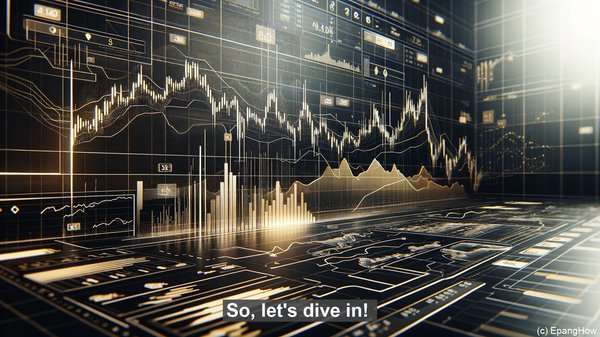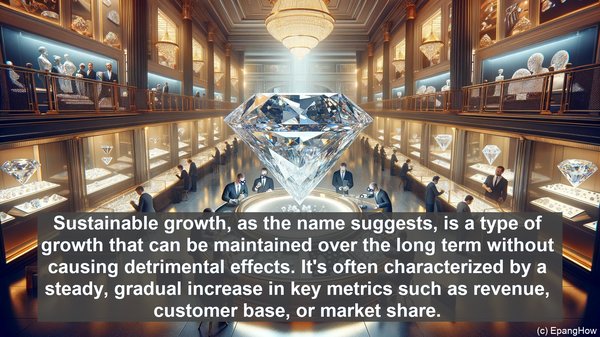Introduction: The Allure of Growth
Hello and welcome! In today’s fast-paced business landscape, growth is a constant goal for many organizations. Whether it’s a startup looking to establish its presence or an established company aiming to expand its market share, the pursuit of growth is often seen as a key driver of success. However, it’s important to recognize that growth can take different forms, each with its own implications and consequences. In this article, we’ll be focusing on two distinct types of growth: sustainable growth and rapid growth. While both may seem desirable on the surface, they have significant differences in terms of their long-term viability, impact on stakeholders, and overall strategic considerations. So, let’s dive in!

Defining Sustainable Growth
Sustainable growth, as the name suggests, is a type of growth that can be maintained over the long term without causing detrimental effects. It’s often characterized by a steady, gradual increase in key metrics such as revenue, customer base, or market share. One of the defining features of sustainable growth is its focus on maintaining a balance between various aspects of the business, such as profitability, customer satisfaction, and employee well-being. This means that while sustainable growth may not result in exponential surges in performance, it aims to create a stable and resilient foundation for the organization’s future. Think of it as a marathon, where the emphasis is on endurance and consistency rather than short-term bursts of speed.
The Advantages of Sustainable Growth
Sustainable growth offers several advantages, both from a business and a broader perspective. Firstly, it provides a sense of stability and predictability. By avoiding sudden spikes or dips in performance, organizations can better plan their resources, investments, and strategies. This can be particularly crucial in industries with long product development cycles or significant lead times. Secondly, sustainable growth often leads to a more engaged and satisfied workforce. When employees see a clear and steady path of progress, they’re more likely to feel motivated and invested in the organization’s success. Additionally, sustainable growth is generally viewed favorably by investors and other stakeholders. It signals a well-managed and resilient business, which can attract funding, partnerships, and other growth opportunities.

The Importance of Long-Term Viability
One of the key aspects of sustainable growth is its focus on long-term viability. While rapid growth may generate impressive numbers in the short term, it can often be unsustainable, leading to a range of challenges. For example, rapid growth can strain the organization’s resources, both in terms of finances and operational capacity. This can result in issues such as cash flow problems, supply chain disruptions, or compromised product quality. Moreover, rapid growth can sometimes be driven by external factors, such as market trends or fads. If the underlying demand isn’t robust or if the organization’s offerings aren’t truly differentiated, the growth may quickly plateau or even decline. In contrast, sustainable growth is built on a foundation of market understanding, customer value, and operational excellence, making it more resilient to market fluctuations and other uncertainties.
The Dynamics of Rapid Growth
Rapid growth, often characterized by exponential increases in performance metrics, can be alluring. It’s often associated with success stories of startups that quickly become industry giants or companies that disrupt established markets. Rapid growth is typically driven by factors such as a breakthrough product or service, a unique business model, or a favorable market environment. It can result in significant advantages, such as capturing a large market share or establishing a dominant position. However, rapid growth also comes with its share of challenges. For instance, scaling up operations at a rapid pace can lead to issues such as talent acquisition, process standardization, or maintaining quality standards. Additionally, rapid growth can sometimes create a bubble-like situation, where the market valuation of a company may far exceed its actual value, leading to potential risks and vulnerabilities.
The Need for Strategic Considerations
When it comes to growth, both sustainable and rapid, strategic considerations are paramount. While sustainable growth may seem more straightforward in terms of its focus on stability and balance, it still requires careful planning and execution. Organizations pursuing sustainable growth need to continuously assess market dynamics, customer needs, and competitive landscapes to ensure their strategies remain relevant and effective. On the other hand, rapid growth often demands bold and decisive actions. It may involve taking calculated risks, entering new markets, or exploring unconventional business models. However, even in the case of rapid growth, a clear strategic vision is essential. Without a long-term plan, rapid growth can quickly turn into a short-lived phenomenon, with potential consequences for the organization’s future.
